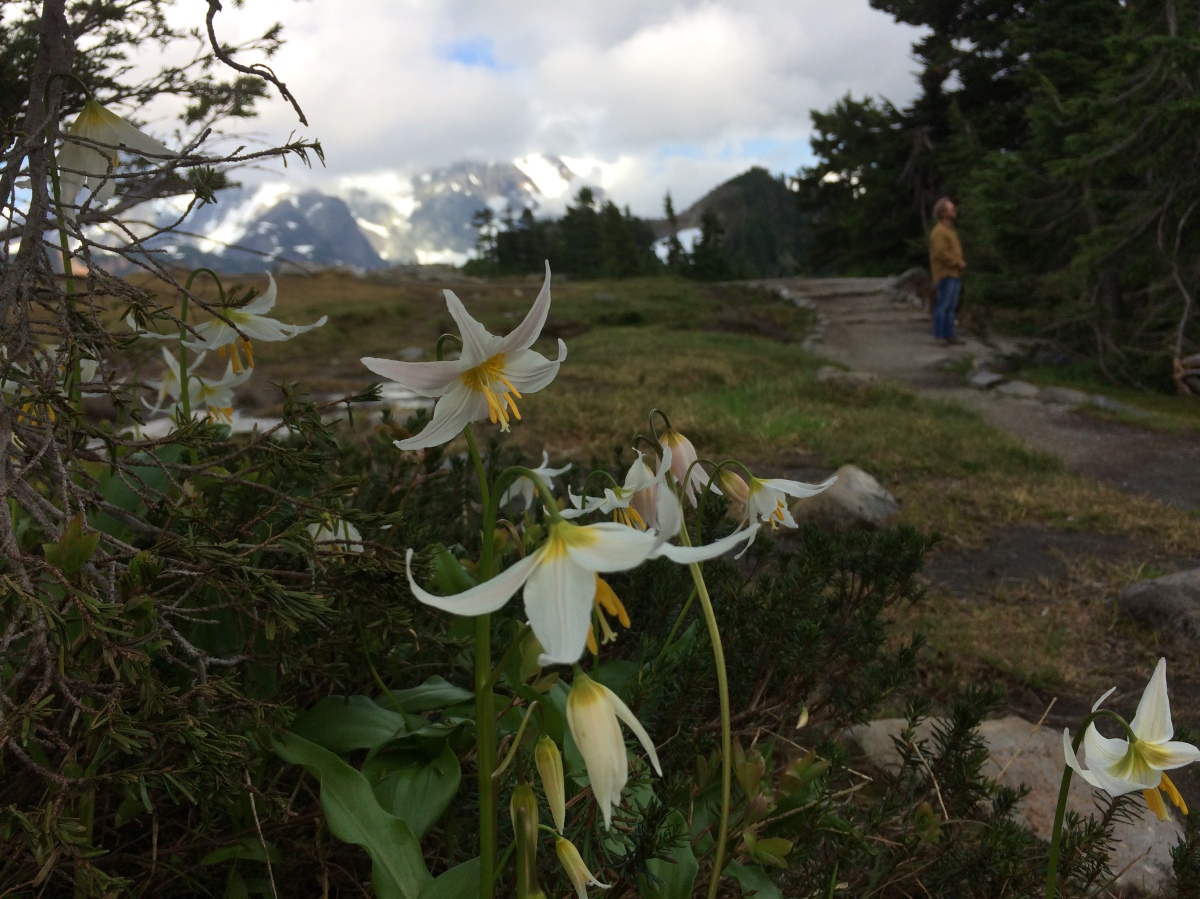Isn’t that a wonderful name? A plant that flowers, just as the robins start calling in the woods. Some people call it Bethroot or Birthroot, because it can be used to stop bleeding after childbirth (Ream, 2011). The Lummi and Skagit tribes of Western Washington also used the juice of the smashed plants or an infusion of the roots as a wash for sore eyes (Native American Ethnobotany). Most of us, however, know this plant by its genus name – Trillium – for three. Three leaves, three white flower petals, three sepals. Every year I look for this flower on my spring walks through wet woods. It’s hard to find in disturbed places, those places that have been logged and regrown or developed into wooded homesites. So I go to places like the Stimpson Family Nature Reserve in Bellingham. This year, I was fooled by the appearance of one Trillium I stumbled across. I am used to seeing the flowers nestled in the distinctive three leaves (which are actually not leaves but are the bracts of the flower) close to the ground, but this flower was standing tall above the forest floor on a six inch stem. My walking companion assured me it was still a Trillium! As spring progresses, white flowers age into a pretty purple color, which has also fooled me in the past.
What I find most fascinating about this plant is its method of seed dispersal. Each Trillium seed has a little appendage called an elaiosome that is tasty to ants and some other insects. Ants take the seeds back to their nest and eat the elaiosome or feed it to the larvae, then they discard the remaining part of the seed on their debris pile. They have been known to carry the seeds up to 15 meters from the plant! (Pojar & Mackinnon, 2004; Ream, 2011). Forests with seed-bearing ants can be lush with Trillium, but I have never before thought about how they came to be there. Mostly, I just enjoy them, harbingers of spring.
From Mary Oliver:
Every spring among
the ambiguities of childhood
the hillsides grew white with the wild trilliums.
I believed in the world. Oh, I wanted
to be easy
in the peopled kingdoms,
to take my place there, but there was none
that I could find shaped like me.
So I entered
through the tender buds,
I crossed the cold creek, my backbone
and my thin white shoulders unfolding and stretching.
From the time of snow-melt, when the creek roared
and the mud slid
and the seeds cracked,
I listened to the earth-talk, the root-wrangle,
the arguments of energy, the dreams lying
just under the surface, then rising,
becoming
at the last moment
flaring and luminous — the patient parable
of every spring and hillside year after difficult year (Oliver, 1986).
Resources:
Erna Gunther. Ethnobotany of Western Washington. 1973.
Native American Ethnobotany: A Database of Foods, Drugs, Dyes and Fibers of Native American Peoples, Derived from Plants. http://naeb.brit.org
Mary Oliver. Dream Work. 1986.
Jim Pojar & Andy Mackinnon. Plants of the Pacific Northwest Coast. 2004.
Tarn Ream. Life History and Demography of Trillium ovatum Pursh. (Liliaceae)in Western Montana. Graduate Student Theses, Dissertations, & Professional Papers. 625. Retrieved from https://scholarworks.umt.edu/etd/625. 2011.


